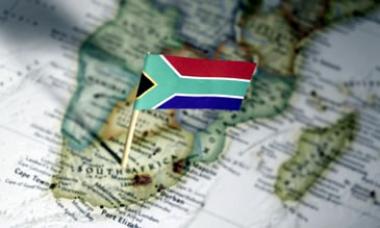SA third-quarter growth slowed to 1.2%
 South Africa's real gross domestic product (GDP) eased to 1.2% in the third quarter, the lowest since the second quarter of 2009, Statistics South Africa (Stats SA) said on Tuesday.
South Africa's real gross domestic product (GDP) eased to 1.2% in the third quarter, the lowest since the second quarter of 2009, Statistics South Africa (Stats SA) said on Tuesday.
South Africa's real gross domestic product (GDP) slowed to 1.2% in the third quarter, the lowest since the second quarter of 2009, Statistics South Africa (Stats SA) said on Tuesday.
"The seasonally adjusted real GDP at market prices for the third quarter of 2012 increased by an annualised rate of 1.2% compared with an increase of 3.4% (revised from 3.2%) during the second quarter of 2012," Gerhardt Bouwer executive manager for national accounts at Stats SA said.
Market expectation was that South Africa's economy would grow by 1.5%.
Tuesday's figure at 1.2% was worse than what was anticipated by the market who expected GDP to come in lower due the recent strike action in mining.
In the third quarter mining and quarrying contracted by 12.7% after showing growth of 30.9% in the second quarter.
"People think that because of what happened [in mining] you will see the direct effect immediately," explained Bouwer, adding that the mining industrial action started at the end of the quarter.
Over the course of the Lonmin Marikana strike, the other two larger platinum producers had continued to produce, said Bouwer. Lonmin is the third largest platinum producer.
Stats SA would not be drawn on whether the recent strikes seen in the South African economy would lead to a worse GDP reading in the fourth quarter.
According to Stats SA, the main contributors to the increase in economic activity were the finance, real estate and business services and general government services (each contributing 0.4%); the agriculture, forestry and fishing industry, the manufacturing industry and the wholesale , retail, motor trade, and catering and accommodation industry (each contributing 0.2%).
The unadjusted real GDP at market prices for the third quarter of 2012 increased by 2.3% compared with the third quarter of 2011.
In the first nine months of 2012, the South African economy grew 2.6% compared to the corresponding period in 2011.
Annabel Bishop, chief economist at Investec Group Economics, said the GDP data had clearly captured the impact of recent illegal strike action on economic activity until the end of September.
She said growth for full-year 2012 was likely to be lower than the 2.5% year on year previously expected but still above 2% year on year.
Elna Moolman, an economist at Renaissance Capital, said the figure was even worse than Renaissance had anticipated.
"This weakness is at least partly owing to the negative impact from the strikes, which we expect to have an even bigger impact on growth and trade data for the fourth quarter of the year," she said.
Nedbank economists said it was widely expected that the economy stalled in the third quarter.
The slower pace was mainly due to a sharp drop in mining production caused by the wildcat strikes in the platinum and gold mining industries over August and September. However, the pace of economic activity in most sectors slowed noticeably over the quarter. Weaker global demand weighed on the manufacturing sector, while softer domestic spending contained the upside for retailers and other services," said Nedbank of the data released by Stats SA.
The bank said the outlook for 2013 remains uncertain with a weak and a vulnerable world economy will continue to undermine the mining and manufacturing sectors.
"Today's GDP figures reflect two realities: first that economic growth remains too subdued, second that the sources of momentum are too narrow and increasingly unsustainable. Production and exports are faltering, while spending and imports continue to increase.
"These imbalances are visible in a bulging trade deficit and a widening current account deficit, which is starting to weigh on the rand. If the current pressure on the rand is sustained, the outcome will be higher inflation in 2013 and beyond.
"While the disappointing growth rate suggests relatively easy monetary policies, the best way to support the economy without aggravating current imbalances and the rand's vulnerability is probably to maintain a neutral stance for as long as possible. We therefore still expect interest rates to remain unchanged until late 2013," said the bank.
At the Monetary Policy Committee (MPC) meeting last week, Governor Gill Marcus said that the central bank had revised downwards GDP growth for 2012 to 2.5% down from 2.6% due mostly to the continued global slowdown and domestic events including labour unrest.













